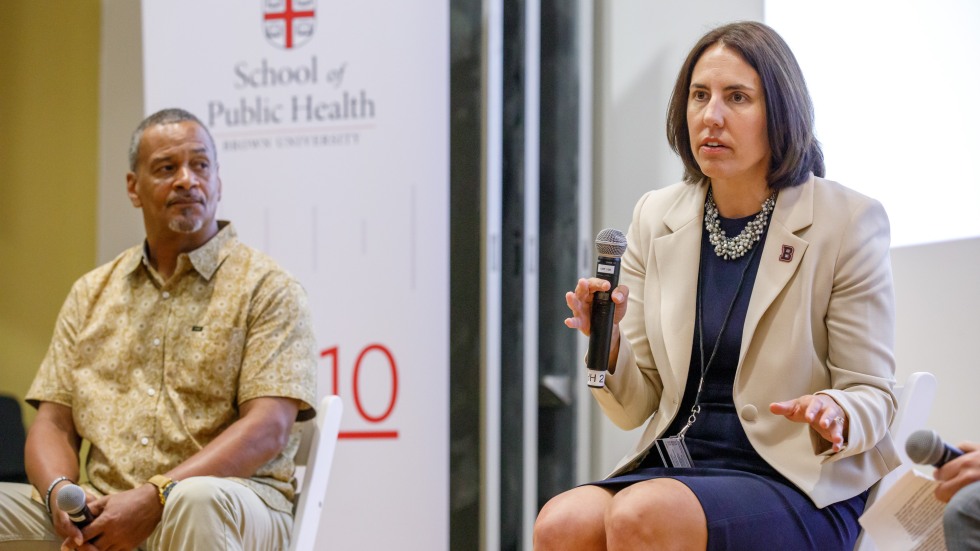Opioid overdoses decreased by three percent in 2003, said moderator Dean Ashish K. Jha at a special public health forum held during the weekend of Brown’s 256th Commencement. But a staggering 107,000 people still died from opioids last year, and public health professionals are unsure if the decrease is temporary or the beginning of a lasting downtrend.
It’s also the case, Dean Jha said during his opening remarks, that the demographics of overdose are changing, with a significant increase among Black and Latino populations: in 2018, 13% of people who died from opioids were Black and 9% were Hispanic. These numbers rose to 20% and 13% in 2023, respectively.
The forum, Action, Collaboration, Engagement: Solving the opioid public health crisis, featured the following panel of practitioners:
- Francesca Beaudoin M.D., Ph.D., academic dean at the Brown University School of Public Health. Dr. Beaudoin is a public health researcher focused in the space of addiction and opioid use disorder. As a physician, Beaudoin currently works with CODAC Behavioral Healthcare as part of the nation’s latest mobile addiction treatment unit.
- Dennis Bailer, overdose prevention program director at Project Weber/ RENEW, the longest-serving treatment center in the country. Bailer is going to be the co-director of the nation’s first state-sanctioned overdose prevention center, which will be opening on the Rhode Island Hospital Campus this fall.
- Tom Coderre, principal deputy assistant secretary at the Substance Abuse and Mental Health Services Administration (SAMHSA). A person in long-term recovery and a former Rhode Island state senator, Coderre combines his interest in policy with his passion for recovery. At SAMHSA, he is responsible for policy that impacts the behavioral health of the nation—a top priority of which is opioid use disorder.
Panelists shared their thoughts on the latest data from the Centers for Disease Control, which shows a slight reduction in opioid-related deaths in 2023.
“One year of data is not enough to claim victory,” Coderre said. “We did see a small three-percent decrease for the first time since 2018. In Rhode Island it was seven percent. There is some evidence that prevention and treatment efforts are working. But it remains an all-hands-on-deck moment for all of us.”


